[ad_1]
Lee Han-byeol has a favourite memory of her elder brother.
They were both teenagers in the 1990s, during the famine that devastated North Korea and is estimated to have killed hundreds of thousands of people. Impoverished, tired and hungry, the pair were travelling to pick up rice from relatives. They had been on the road overnight.
Lee’s eyes mist when she recalls how, as they walked through the darkness, Lee Se-il had swung her on to his back. As dawn broke, she clung wearily to his bony shoulders. “He really adored me,†she whispers, clutching a small black-and-white photo of him. By now, the tears are flowing steadily. “I hope I can see his face again.â€
Lee, who fled North Korea through China in 1999, is now 38. Speaking in her small office in the northern outskirts of Seoul, South Korea’s capital, she says the last clear sighting of her brother was in 2009, when he was in the custody of the Kim regime after attempting to escape.
China’s security forces had apprehended him in the borderlands and he was transported back to North Korea. The owner of a guesthouse who had briefly harboured him relayed that he was beaten savagely, and that his hands and feet were wrapped in bandages because of acute frostbite.

A few years ago Lee attempted to find out more. She made phone calls and sent messages through a network of middlemen in China, and her family still inside North Korea bribed officials for information. The only result was a second-hand glimpse: he was apparently still in a prison camp in North Hamgyong province, near the country’s borders with China and Russia. Since then, no word. If her brother is still alive, he would be in his mid-forties.
As a statistic, Lee Se-il fits into a number of classifications. He is one of thousands of refugees who have escaped from North Korea into China only to be arrested and returned. He is one of hundreds of thousands to be detained in the kwanliso, the Kim regime’s political prison camps. And he is one of an unknown number, possibly millions, who have disappeared inside North Korea and who are feared lost to their families, and to history, for ever.
“There is no way to truly know whether they are alive or not,†Lee says. “I feel so heartbroken.â€
Now entering its eighth decade, the “hermit kingdom†of North Korea remains heavily guarded from international observers; even western intelligence agencies struggle to acquire reliable information. Defectors such as Lee Han-byeol, who now spends much of her time working to bring other North Koreans safely to South Korea, are often the best sources, though details are scarce.
But just as North Korea’s disappeared seem on the point of vanishing from memory altogether, technology and the determination of a tireless group of activists are providing something that has evaded the families for years: hope.
In a small, bright office a few hundred metres from the presidential Blue House in Seoul, the Transitional Justice Working Group (TJWG) is building a digital database. The ambition of this group of mostly South Korean academics, lawyers, cyber experts and human rights activists is to create an archive of every single person thought to have been detained, abducted or disappeared in North Korea since the 1950s.
The effort involves bringing together tens of thousands of documents, records, images and more. Working slowly and painstakingly, the group is also compiling and mapping other lists: the secret prisons, the execution sites, the mass graves, the identities of perpetrators. The project has been going for three years now; almost 20,000 files are already online and freely available, with an estimated 100,000 more waiting to be processed. It is named Footprints.
One of the early batches of documents loaded into the system included a UN Human Rights Council report that mentioned Lee Se-il. It noted that he had allegedly been “arrested by members of the national security service†after his repatriation. Lee Han-byeol’s hope is that, as the database expands and is used by others, more and more will be revealed. “Anyone can check the database. Someone might know about my brother’s situation,†she says. “It does give me a glimmer of hope.â€
The story of North Korea’s mass disappearances dates back to the country’s beginnings. In early August 1945, Tokyo was on the point of surrendering to Allied forces and the question of what to do with Japan’s colonial empire loomed large. Korea had been occupied by the Japanese since 1910; the Americans’ fear was that, once Japanese forces departed, the Soviets would “occupy the entire peninsula and move quickly toward Japanâ€, as historian Don Oberdorfer has written.
Working late into the evening on August 10, just a day after the bombing of Nagasaki, two young US army officers, using a National Geographic map, proposed a solution: dividing Korea along the 38th parallel, about halfway down the peninsula. The southern zone would be controlled by Washington, the north by Moscow.
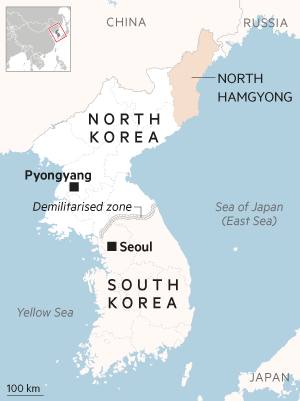
For their puppet, the Russians chose a jowly 33-year-old guerrilla fighter who had waged war against the occupying Japanese forces in Manchuria. His name was Kim Song Ju, but he styled himself Kim Il Sung.
It was always Kim’s ambition to take back control of the peninsula. In June 1950, Soviet-built tanks stormed across the border, through Seoul and further south, igniting the Korean war. The surprise attack was almost successful, driving ill-prepared South Korean and US troops to a small enclave. It was only the bravery of South Korean suicide squads and US general Douglas MacÂArthur’s daring landing in September that forced a North Korean retreat.
During that months-long occupation by the north, about 90,000 South Koreans are estimated to have been abducted, remaining in enemy hands as they moved back towards Pyongyang. While many were taken as slave labour, others were also targeted for specialist skills and experience.
One of those taken was Lee Seong-hwan, a young factory manager and army interpreter with a wife and two young children, who was snatched from the family home in eastern Seoul by North Korean soldiers. His daughter, Lee Mi-il, was just 18 months old when he was kidnapped; now 72, she still lives in the same neighbourhood and has dedicated her life to finding him and others. “My mother talked about my father a lot,†says Lee Mi-il in a thin rasp. “She believed that he was the greatest person in the world.â€
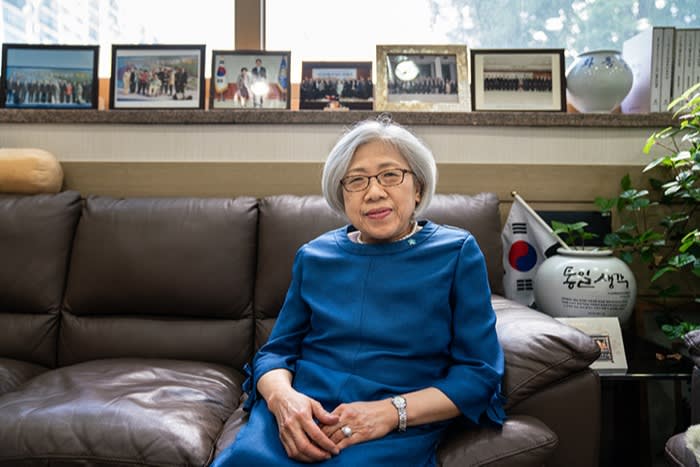
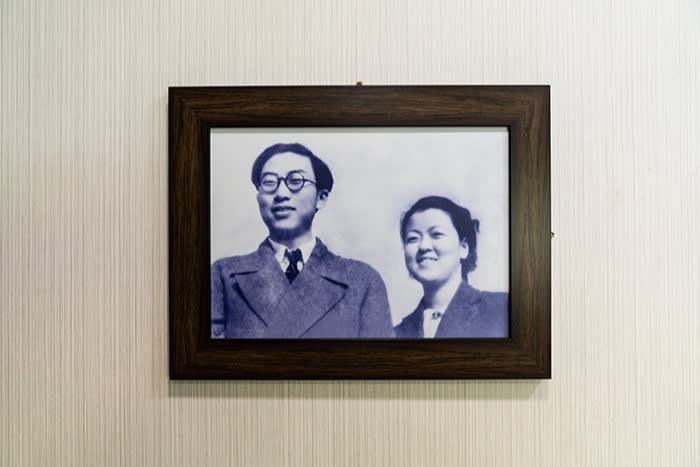
The conflict became a brutal war of attrition; about three million Koreans on both sides — one in 10 — were killed, injured or went missing. When an armistice was finally signed in July 1953, the two sides were essentially back where they started, on the 38th parallel, with a demilitarised border zone between them. The agreement included provisions for the repatriation of prisoners of war, but 50,000 South Koreans were never released. Over the years, a small fraction of these PoWs and their families have made successful defections, carrying with them stories of slavery, torture and summary executions.
North Korea has remained in the grip of the Kim dynasty ever since. In 1994 Kim Il Sung was succeeded as supreme leader by his son Kim Jong Il, who in turn handed over to his son, Kim Jong Un, who has ruled for the past decade. An obsession with control and an intense fear of foreign influence have been hallmarks of the Kim ideology.
As Jung Pak, a former CIA officer and now a top adviser to US president Joe Biden, notes, Kim Il Sung began indoctrinating the North Korean people as early as 1955 with the doctrine of juche, or self-reliance, and his position as the suryong, sole leader. Pak writes that “the regime’s opaqueness, self-imposed isolation, robust counter-intelligence practices, and culture of fear and paranoia†make even “some of the most mundane pieces of information†difficult to obtain. International observers’ hopes that Kim Il Sung’s Swiss-educated grandson would prove a reformer have so far proved unfounded.
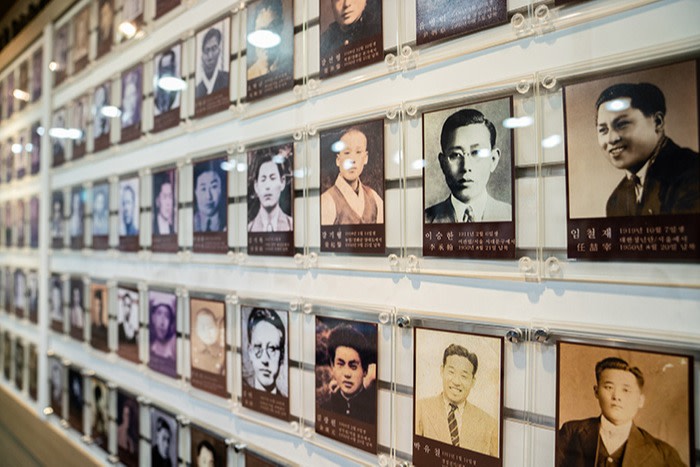
From the 1960s to the 1980s, hundreds more foreigners, mostly South Korean and Japanese citizens, were seized, often by North Korean agents. Some were abducted for particular skills: to teach foreign languages to North Korean spies, for instance. Among the most notorious cases was the 1969 hijacking of a South Korean passenger plane with 50 people on board; 11 never returned and their fate remains mysterious.
Others were abducted as brides for the few foreign men in the country; local women, raised on a diet of xenophobic propaganda, were repelled by foreigners. Charles Robert Jenkins, an American soldier detained in North Korea for four decades after drunkenly crossing the demilitarised zone in a brazen attempt to desert in 1965, was required to live with a Japanese woman who had herself been snatched while walking with her mother near her home. Women abducted from Thailand and Romania were forced into marriage with detained American soldiers.
There is also a third class of abductees: North Koreans who have disappeared inside the country into a vast system of labour and prison camps, usually sent there for committing crimes against the regime. Although the precise number is unclear, it is likely to be enormous: of more than 33,000 North Koreans who have managed to defect to South Korea since the late 1990s, nearly one in three has an immediate family member who has suffered this fate, according to surveys.
The void left by these disappearances is stark, and families often spend decades attempting to find some form of closure. Son Myung-hwa was born in North Korea in 1962 to a father who had been abducted by North Korean forces as a prisoner of war and spent his life as a forced labourer in a coal mine near Musan by the Chinese border, eventually dying in his fifties.
When Son succeeded in escaping to South Korea in 2005, she spent eight years attempting to get hold of her father’s remains — in the end making a risky trip to China to meet North Korean brokers who had promised to transport them. On July 4 2015, his bones were finally buried in a national cemetery in South Korea. “I had to restore my father’s honour,†she says.
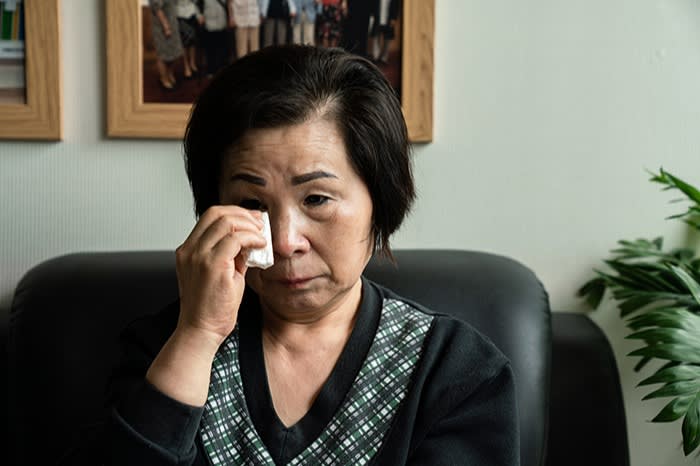
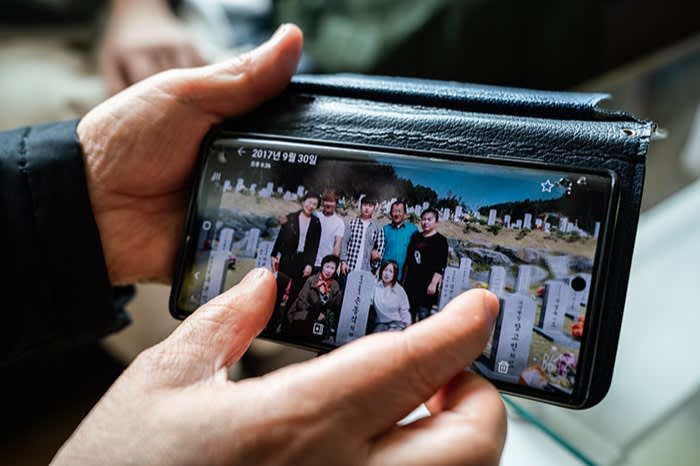
For other families, getting hold of the most basic scraps of information — names, dates, details of disappearances, where bodies are buried — is as much as they can hope for. This is where the Footprints database comes in.
The TJWG, a non-governmental organisation, was set up after a 2014 special inquiry by the UN, which declared that the “gravity, scale and nature†of North Korea’s crimes against humanity “does not have any parallel in the contemporary worldâ€.
With funding from the US government, and other private and public sources, plus technological support from a Geneva-based NGO, the group began by attempting to locate execution and burial sites in North Korea using a combination of eyewitness interviews and satellite imagery. It now employs digital tools including data visualisation and geolocation software, as well as providing secure storage for legal documents (in the hope of future trials) and photos of those who have disappeared. Sources range from public and private archives to new interviews and testimonials from defectors, including former North Korean officials.
A search for “Lee Se-ilâ€, Lee Han-byeol’s brother, produces data such as the date and location of his disappearance, and which victim “type†he falls into: “Forced repatriation of escapee. Current status: unknown.†Another search tells a different story, equally threadbare. “Name: Lee Seong-hwan. Victim type: Korean war abductee. Current status: unknown.â€
Lee Soon-geum, 59, an advocate for the families of those taken as prisoners of war, was among the first to record a video testimony for the archive. She says her father, a South Korean soldier, was sentenced to a life spent shovelling coal in mines at Aoji near the Chinese border.
As a child growing up in the mining town, she hated her father for having served in America’s “puppet armyâ€; guilty by association, the family were constantly monitored. “We resented him,†she says. “I thought he should have died in the war.â€
His fate was grim: in 1996, he was executed along with her younger brother. Labelled “spies and reactionary scumâ€, the pair were tortured, possibly for months, before being displayed to relatives, bound and gagged, then shot. Their crime, she believes, was speaking out against the regime. Lee Soon-geum was forced to watch.
“My brother looked down at me and looked into my eyes, and I saw him shedding tears,†she says, her words punctuated by pain-filled sobs. She eventually managed to flee to South Korea in 2004.

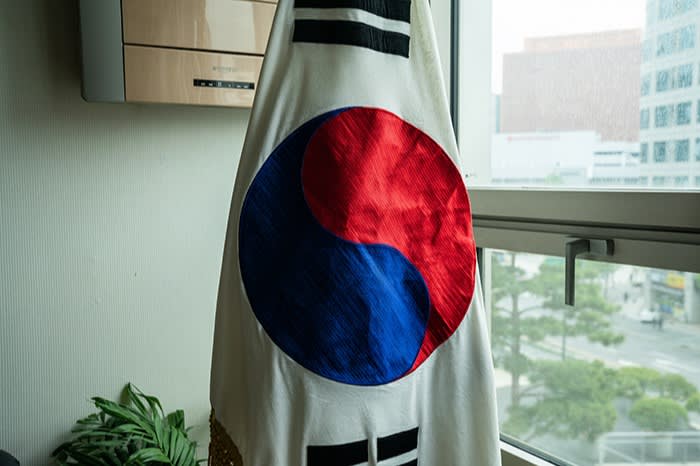
First-hand evidence such as this, researchers hope, is a means of pressuring Pyongyang to address human rights issues thought still to be widespread in the country of 26 million people.
By obtaining GPS co-ordinates of hundreds of sites where they believe bodies have been disposed of, and linking them with documents, researchers now think they can track where some kwanliso prison camps are located, as well torture and execution facilities. (For fear of tipping off the authorities in Pyongyang, many of the details they have acquired have not been made public.)
The database also has another purpose: to draw international attention to the plight of the Korean missing. When it comes to writing about North Korea, argue activists, the global media all too often prefer to focus on rocket launches and nuclear tests, oddball haircuts and militaristic parades, rather than the human stories of those who have disappeared. “No one listens to us, no matter how much we shout about it,†says Lee Soon-geum.
Even people in South Korea often have little inkling of their close connection to events. When Daye Yoon, an IT expert, was hired by the TJWG in 2018 to help with data security (including threats from North Korean hackers), she knew little about her own family history — just sketchy details of her paternal grandfather, who died in an incident somehow related to the north. Her parents wouldn’t be drawn on the details.
After chatting in the office, her colleague looked up a list of South Korean fishermen abducted in 1968: among them was her grandfather.
The discovery has persuaded her of the value of the work the TJWG is doing, she explains, but she still can’t bring herself to discuss what happened with her parents. “I don’t want to make them sad,†she says. “But when I started working here, my mother told me that this was probably my destiny.â€
As the Footprints database reveals more and more of the internal architecture of North Korea’s shadowy apparatus of repression, activists hope that it can help prepare for a future in which the country is no longer a dictatorship but some form of democracy, and in which there might finally be a legal reckoning.
“We are sending a signal to the North Korean elites,†says Ethan Hee-Seok Shin, one of the TJWG’s co-founders. The message is that “one should tread carefully, otherwise you can be subject to a criminal-justice mechanism after the transitionâ€.
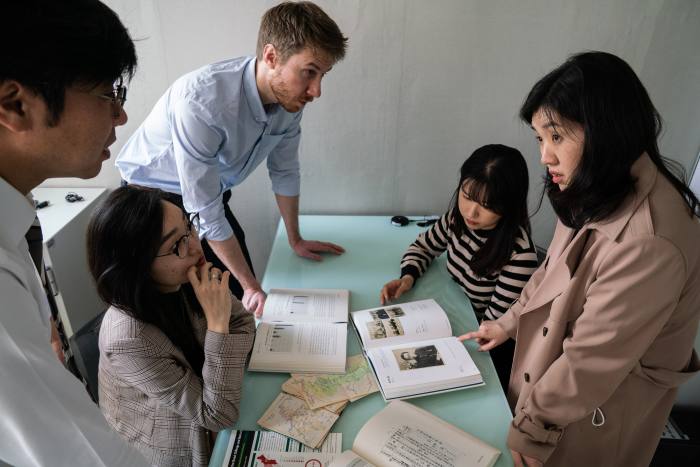
The team in Seoul are following in the footsteps of transitional justice researchers in places such as the former East Germany, where archivists have spent years reconstructing and combing through Stasi files — sometimes piecing together shredded documents by hand — to track the activities of the communist regime and help Germans come to terms with the past.
Another inspiration for Footprints was research done in Guatemala after its civil war, which ended in 1996. Tracking down people who had perpetrated killings, disappearances and other war crimes was difficult: high-ranking officers’ names had often been left off authorisation documents. But researchers were ultimately able to use government records of promotions to ascertain who had been in charge. TJWG interviewers make sure to ask every defector questions about official records, in the hope that one day their locations might be accessed.
Scott Stevens, a Canadian who co-founded the TJWG and is now its communications director, found himself in the field after moving to Seoul in 2012 and working in education. After volunteering with defectors and activists, and visiting North Korea as a tourist in 2013, he became fascinated by the country and its people. Even apparently innocuous pieces of information can be precious, he explains: “Everything from chain of command to responsibility or who’s making these decisions at what level. All of that can be really useful for accountability processes down the line.â€
Again, Stevens draws lessons from history: people who worked in Cambodia in the 1990s after the fall of the Khmer Rouge learnt how important it was to locate grave sites as early as possible “so that investigations can proceed more quickly when the opportunity comesâ€. In the end, more than 20,000 grave sites were uncovered there after the regime’s collapse.
Not everyone believes the TJWG’s approach is the right one. By publicising individual families and stories, there are real dangers that people still living in North Korea might suffer reprisals, say experts.
Figures in South Korea’s foreign policy establishment instead advocate a “trade-offâ€: try to improve the lives of ordinary North Koreans through engagement and economic interaction, rather than by advocating for human rights. “Once we raised the human rights issues up-front, then North Korea regarded it as a hostile effort to undermine the regime,†says one former senior official in Seoul who has dealt with North Korea. (They asked not to be named.) “I can tell you one thing for sure: ‘megaphone diplomacy’ for human rights will never improve human rights conditions in North Korea.â€
There is also a risk that identifying perpetrators and apportioning blame at this stage might undermine efforts from within to encourage reform, says Sokeel Park, a Seoul-based activist who leads a group called Liberty in North Korea that has helped many people escape and build lives elsewhere. Efforts should focus on how, in places such as Egypt under Hosni Mubarak or communist Europe, the wider world signalled to people within those societies that it was in their interests for regime change to happen.
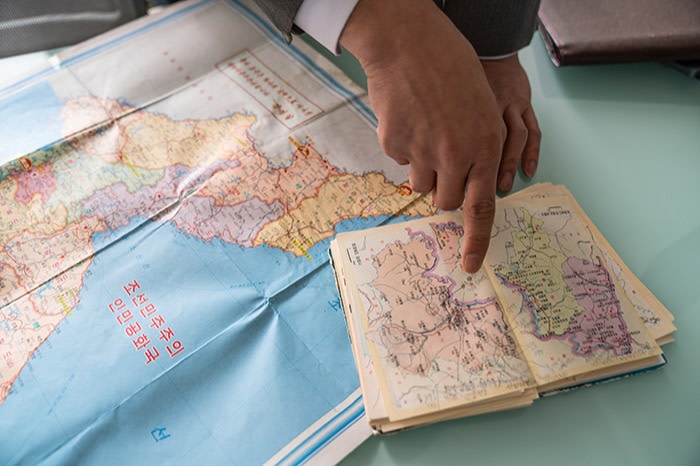
Powerful people in North Korea must be won over to the cause of change, says Park: “We need to try and make sure that we don’t unwittingly persuade the relevant people inside the country that that transition would be very bad for them.â€
Shin isn’t convinced. Activists such as TJWG can’t afford to wait until after the regime collapses, he says, as happened in other countries. Moreover, many people with first-hand knowledge of atrocities are in their final years. “People weren’t ready. Everything was happening so fast and nobody was really prepared in advance,†he says of post-war Germany and Japan. “We want to avoid that kind of scenario by having these records, having the personnel files of the victims and perpetrators ready,†he says, adding, “It is a race against time.â€
When South Korea’s national assembly building was constructed in the early 1970s, the architects were given a unique instruction for the fan-shaped debating chamber: leave space so that representatives from the north might one day be included.
These dreams have faded for many: the two countries have travelled such different paths since 1945 that it is hard to see how they might one day be united. But over the past four years, South Korean president Moon Jae-in, a former human rights lawyer and the child of North Korean refugees, has staked his legacy on making reunification a priority.
With the unlikely support of US president Donald Trump, the two sides edged closer. In late April 2018, Moon hosted Kim at a lavish summit at Panmunjom, where the armistice was signed in 1953, and the two leaders embraced. As well as voicing lofty commitments to disarm and denuclearise the Korean peninsula, they agreed to “solve†the reunion of separated families and relatives.
But there has been little practical progress, with Seoul’s Ministry of Unification struggling to negotiate with its counterparts in Pyongyang. In the past 20 years, only about 60 families have participated in brief, temporary state-organised reunions. Now, as Moon reaches the final months of his presidency, reunification appears as far away as ever.
Meanwhile, international attention has waxed and waned. Neither admonishments by the US government nor frequent calls by the UN for North Korea to address the situation of those in prison camps or who have suffered torture have resulted in significant change. Biden has signalled North Korean human rights will be given more prominence under his administration. But analysts expect Kim’s nuclear weapons to remain his focus.
Time is of the essence, and not just politically. In the aftermath of the Korean war, the search for those abducted was led by parents looking for lost children and wives for husbands; later the task was taken on by grown-up children hoping to one day meet parents they never knew. But memories of that era are disappearing fast. South Korean cities are unrecognisable even to those who grew up there in the 1960s and 1970s; young people feel more remote from the past, and from family connections they once had to North Korea.
According to a survey that tracks South Korean attitudes towards “peace and reconciliation†run by the state-backed Korea Institute for National Unification, it is not just interest in the idea of reunification that is fading, but in the topic of the split altogether. People in their twenties and thirties ranked highest on “the division not affecting their livesâ€.
Leighanne Yuh at Korea University in Seoul says she has been “genuinely surprised†by the pace at which disconnection from North Korea has become mainstream. “There was this affinity with North Korea, and this general sense that we’re all the same people,†she says. “But as more and more time has progressed, that feeling has waned. My students have even expressed that they feel like North Koreans are a different ethnicity — which I found pretty shocking — and the cultural differences, they feel, are also too great.â€
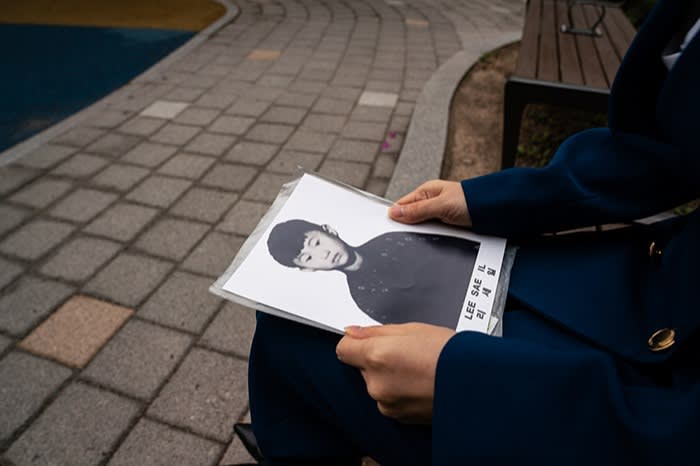
The TJWG is under no illusions about how hard it is to remind people of the past. But the group insists there is progress. Its data have already been deployed in direct questions to the North Korean government at the UN, for example probing Pyongyang’s use of the death penalty. Publicising testimonials from escapees has helped rekindle public attention.
Possibly the most tangible impact is memorialisation, argues Stevens: allowing families the opportunity to mark what has happened to loved ones. Many relatives no longer hope for a family member to be returned or even that they’ll be able to exhume a body, he says: it’s enough for a disappearance to be officially noted. “They were just happy to tell someone and if they’re going to pass away, then maybe this information will be recorded.â€
Recording and reminding are Lee Han-byeol’s tasks too. Holding the photograph of Lee Se-il, her lost brother, and talking of the countless others who have gone, she says: “I just hope people remember them by their name, not just as numbers.â€
Edward White is the FT’s Seoul correspondent and Kang Buseong is an FT reporter in Seoul
Follow @FTMag on Twitter to find out about our latest stories first.
[ad_2]
Source link





